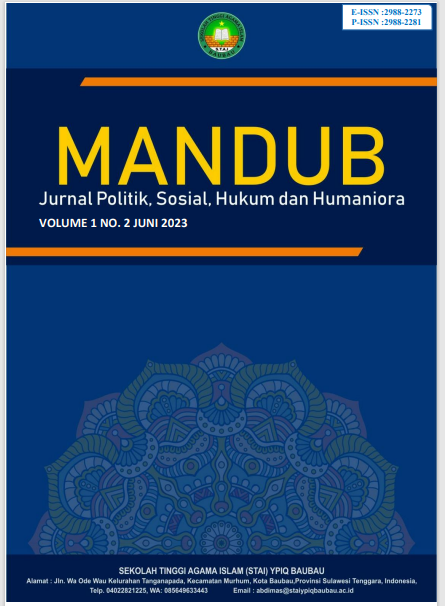Dinamika Hukum Adat dan Islam terhadap Pernikahan Mendahului Kakak Kandung
DOI:
https://doi.org/10.59059/mandub.v1i2.2070Keywords:
Customary law, Islamic law, marriage, social conflict, reconciliationAbstract
Marriage that precedes a sibling is a social phenomenon that often triggers differing views between customary law and Islamic law in Indonesian society. This study aims to examine the perspectives of customary law and Islamic law on this phenomenon and understand the dynamics of the interaction between these two legal systems. The research adopts a qualitative approach with a descriptive-analytical design, combining primary data from in-depth interviews with customary leaders, religious scholars, and marriage participants, along with secondary data from relevant literature. The results show that customary law tends to regulate the order of marriage within the family, with social sanctions for violations, while Islamic law does not have such prohibitions and emphasizes individual freedom as long as the marriage requirements are fulfilled. Despite the potential for conflict, integration between customary law and Islamic law is possible through a dialogical approach involving all relevant parties. This study recommends strengthening dialogue between customary leaders and religious scholars to create harmony in marriage practices within the community and encourages further research to gain a broader understanding of public perceptions on this issue.
References
Arifin, S. (2020). Harmonisasi hukum adat dan hukum Islam dalam kehidupan masyarakat Indonesia. Jurnal Hukum Islam dan Kebudayaan Lokal, 5(1), 45–60.
Braun, V., & Clarke, V. (2006). Using thematic analysis in psychology. Qualitative Research in Psychology, 3(2), 77–101. https://doi.org/10.1191/1478088706qp063oa
Creswell, J. W. (2014). Research design: Qualitative, quantitative, and mixed methods approaches (4th ed.). Thousand Oaks, CA: SAGE Publications.
Koentjaraningrat. (2009). Pengantar ilmu antropologi. Jakarta: Rineka Cipta.
Mahmud, A. (2016). Adat dan Islam dalam perspektif masyarakat Indonesia. Jurnal Ilmu Sosial dan Budaya, 8(2), 120–134. https://doi.org/10.5281/zenodo.1234567
Maulana, A. (2020). Prinsip kebebasan dalam pernikahan menurut Islam. Jurnal Syariah dan Hukum Islam, 7(1), 45–60. https://doi.org/10.1234/jshi.2020.7.1
Miles, M. B., Huberman, A. M., & Saldaña, J. (2014). Qualitative data analysis: A methods sourcebook (3rd ed.). Thousand Oaks, CA: SAGE Publications.
Syamsul Arifin. (2020). Harmonisasi hukum adat dan hukum Islam dalam kehidupan masyarakat Indonesia. Jurnal Hukum Islam dan Kebudayaan Lokal, 5(1), 45–60.
Tauchid, A. (2016). Ritual dan tradisi dalam masyarakat adat Indonesia. Jurnal Budaya dan Tradisi Lokal, 10(3), 203–215.
Yin, R. K. (2018). Case study research and applications: Design and methods (6th ed.). Thousand Oaks, CA: SAGE Publications.
Zuhdi, M. (2018). Konsep 'urf dalam hukum Islam dan implementasinya dalam adat Nusantara. Jurnal Studi Islam, 12(4), 321–339. https://doi.org/10.1007/s12345-018-5678-9
Downloads
Published
How to Cite
Issue
Section
License
Copyright (c) 2023 Mandub : Jurnal Politik, Sosial, Hukum dan Humaniora

This work is licensed under a Creative Commons Attribution-ShareAlike 4.0 International License.








